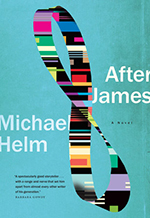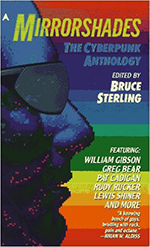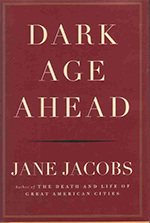 I’ve now been back from working on the I1K Project in Northern Saskatchewan for almost nine months, and I managed to spend none of 2016 working in the field[ref]This link features cool stuff about helicopters![/ref]. Unfortunately I spent about six months in the middle of the year unemployed, but that did allow me to get a fair bit of reading done, and I managed to get my brain back into working order, so to speak[ref]Some of you may remember that I read Moby-Dick in six days at the beginning of 2013, but by the time the project was in full swing it was all I could do to concentrate on things like the TV show Arrow, my workload was so exhausting.[/ref]. I’ve been lucky enough to get back into reviewing, and I feel like I’m sharper and better than ever in that regard[ref]I wrote four reviews in 2016, but so far only two have been published, and I’m still working on a fifth.[/ref]. It feels good to have the money coming in, but getting to read new work (and seeing my byline in print) is even better. So let’s get into it:
I’ve now been back from working on the I1K Project in Northern Saskatchewan for almost nine months, and I managed to spend none of 2016 working in the field[ref]This link features cool stuff about helicopters![/ref]. Unfortunately I spent about six months in the middle of the year unemployed, but that did allow me to get a fair bit of reading done, and I managed to get my brain back into working order, so to speak[ref]Some of you may remember that I read Moby-Dick in six days at the beginning of 2013, but by the time the project was in full swing it was all I could do to concentrate on things like the TV show Arrow, my workload was so exhausting.[/ref]. I’ve been lucky enough to get back into reviewing, and I feel like I’m sharper and better than ever in that regard[ref]I wrote four reviews in 2016, but so far only two have been published, and I’m still working on a fifth.[/ref]. It feels good to have the money coming in, but getting to read new work (and seeing my byline in print) is even better. So let’s get into it:
 I set myself two reading projects for 2016; I would read as many of the classic works of cyberpunk fiction that I could get my hands on, and I would also read as many books on urbanism[ref]With a focus on smart city and sharing economy issues.[/ref] as I could manage. The two projects were related, in my mind. Cyberpunk as a sub-genre of science fiction is overwhelmingly urban, and also overwhelmingly concerned with the point where the rubber meets the road with regard to technology and people; there is an argument to be made that, superficially at least, cyberpunk is a species of urban design fiction. (There are more interesting, and more important, arguments about the nature of cyberpunk to be made, but I have another post planned for that.)
I set myself two reading projects for 2016; I would read as many of the classic works of cyberpunk fiction that I could get my hands on, and I would also read as many books on urbanism[ref]With a focus on smart city and sharing economy issues.[/ref] as I could manage. The two projects were related, in my mind. Cyberpunk as a sub-genre of science fiction is overwhelmingly urban, and also overwhelmingly concerned with the point where the rubber meets the road with regard to technology and people; there is an argument to be made that, superficially at least, cyberpunk is a species of urban design fiction. (There are more interesting, and more important, arguments about the nature of cyberpunk to be made, but I have another post planned for that.)
I read a total of 93 books in 2016, up 21 from 72 in 2015. I was not reading with things like gender and race as a focus this year[ref]And the early years of cyberpunk are pretty white and male, to be honest.[/ref], but I did my best to bear such factors in mind when choosing books. Please note that there is sometimes significant overlap between categories. My breakdowns look like this[ref]In this context, the word “by” refers to either the author(s) or editor(s), as appropriate; for instance individual contributors to anthologies are not counted, only the editors.[/ref]:
62 books/67% by men, up from 51 books/65% in 2015
27 books/29% by women, up from 25 books in 2015, but down as a percentage from 32% in 2015
4 books/4% by both men and women, up from 2 books/3% in 2015
7 books/8% by people of colour, up from 4 books/5% in 2015
2 books/2% by women of colour, up from 1 book/1.2% in 2015
1 book/1% by a First Nations author, up from 0 books/0% in 2015
5 books/5% by LGBTQ authors[ref]This is a best guess based on authors who have made public declarations about this information. It may be the true number, it may not be. I’m not keeping too close an eye on this particular metric, because not everybody wants this stuff to be public, and that’s okay. I did not track this information at all in 2015.[/ref]
3 books/3% were books in translation, holding steady at 3 books from 2015, but down from 4% in 2015
19 books/20% were Canadian[ref]Refers to books by Canadian authors or published by Canadian houses. Does not include Jane Jacobs.[/ref], up from 17 books in 2015, but down from 22% in 2015
6 books/6% were books by Canadian women, up from 4 books/5% in 2015
1 book/1% was by both Canadian men and women, holding steady from 2015
3 books/3% were by Canadian people of colour[ref]Not counted in 2015.[/ref]
1 book/1% was by a Canadian woman of colour[ref]Not counted in 2015.[/ref]
9 books/10% were self-published, up from 1 book/1.2% in 2015
24 books/26% were non-fiction, up from 15 books/19% in 2015
17 books/18% were books about urbanism
53 books/57% were genre fiction, up from 51 books in 2015, but down from 65% in 2015
31 books/33% were books from the cyberpunk sub-genre
13 books/14% were literary fiction, up from 12 books in 2015, but down from 15% in 2015
And now here are the best books I read in 2016, not counting re-reads, in the order that I read them:
- The Last Unicorn, by Peter S. Beagle
- Urban Computing and Its Discontents (Situated Technologies Vol. 1), by Adam Greenfield and Mark Shepard
- What’s Yours is Mine: Against the Sharing Economy, by Tom Slee
- The Water Knife, by Paolo Bacigalupi
- Come Closer, by Sara Gran
- After James, by Michael Helm[ref]You can read my review on the Quill & Quire website.[/ref]
- Moneyball: The Art of Winning an Unfair Game, by Michael Lewis
- A Song Called Youth Trilogy, by John Shirley
- Paintwork, by Tim Maughan
- The Economy of Cities, by Jane Jacobs[ref]On this list largely because of how interesting the New Obsidian material is, though most of her “we have always been capitalists” theory of economic development has been thoroughly debunked in the decades since she wrote it.[/ref]
- Dark Age Ahead, by Jane Jacobs
- Normal, by Warren Ellis
- The Journey Prize Stories 28: The Best of Canada’s New Writers, edited by Madeleine Thien, Brian Francis, and Kate Cayley
The worst books I read in 2016, in the order I read them, were:
- Headcrash, by Bruce Bethke
- The Ware Tetralogy, by Rudy Rucker
And finally, honourable mentions:
- All the Birds in the Sky, by Charlie Jane Anders
- Pump Six and Other Stories, by Paolo Bacigalupi
- His Majesty’s Dragon, by Naomi Novik
- Corvus, by Harold Johnson
- The Untold Tale, by J.M. Frey
- The Forgotten Tale, by J.M. Frey[ref]Review forthcoming.[/ref]
 I didn’t quite accomplish all that I wanted to as far as 2016’s reading projects are concerned—I acquired a lot of books for both projects that got left on the shelf for lack of time—but 93 books is a new personal reading record for me in a year, and probably the first time since I was an undergraduate that I managed to read more than 75 in a single year. My only reading project for 2017 is my Canada 150 Project, which I’ve already posted about a number of times. I do hope to do a bit more literary reading this year, and I will continue to read from both the cyberpunk and urbanism categories. Since I did very little blogging in 2016, below are two lists, one of my cyberpunk reading program, and one of my urbanism reading program. Please note that my 2016 project did not involve re-reading books I’d already read (which is why you will find nothing by William Gibson on the list, nor The Death and Life of Great American Cities), and that I left a lot of books I had hoped to read unread due to lack of time[ref]If you want to argue with me about how I’m classifying some of these books, feel free.[/ref].
I didn’t quite accomplish all that I wanted to as far as 2016’s reading projects are concerned—I acquired a lot of books for both projects that got left on the shelf for lack of time—but 93 books is a new personal reading record for me in a year, and probably the first time since I was an undergraduate that I managed to read more than 75 in a single year. My only reading project for 2017 is my Canada 150 Project, which I’ve already posted about a number of times. I do hope to do a bit more literary reading this year, and I will continue to read from both the cyberpunk and urbanism categories. Since I did very little blogging in 2016, below are two lists, one of my cyberpunk reading program, and one of my urbanism reading program. Please note that my 2016 project did not involve re-reading books I’d already read (which is why you will find nothing by William Gibson on the list, nor The Death and Life of Great American Cities), and that I left a lot of books I had hoped to read unread due to lack of time[ref]If you want to argue with me about how I’m classifying some of these books, feel free.[/ref].
Cyberpunk:
- Rubicon Beach, by Steve Erickson
- Accelerondo, by Charles Stross
- True Names: And the Opening of the Cyberspace Frontier, by Vernor Vinge
- Altered Carbon, by Richard K. Morgan
- Stand on Zanzibar, by John Brunner
- Pump Six and Other Stories, by Paolo Bacigalupi
- Synners, by Pat Cadigan
- The Water Knife, by Paolo Bacigalupi
- Starfish, by Peter Watts
- Trouble and Her Friends, by Melissa Scott
- Corvus, by Harold Johnson
- Mirrorshades: The Cyberpunk Anthology, edited by Bruce Sterling
- Heavy Weather, by Bruce Sterling
- Headcrash, by Bruce Bethke
- Eclipse (A Song Called Youth Vol. 1), by John Shirley
- Eclipse Penumbra (A Song Called Youth Vol. 2), by John Shirley
- Eclipse Corona (A Song Called Youth Vol. 3), by John Shirley
- Mindplayers, by Pat Cadigan
- Fools, by Pat Cadigan
- Tea From an Empty Cup, by Pat Cadigan
- Metrophage, by Richard Kadrey
- Company Town, by Madeline Ashby
- Paintwork, by Tim Maughan
- Software (Ware Vol. 1), by Rudy Rucker
- Wetware (Ware Vol. 2), by Rudy Rucker
- Freeware (Ware Vol. 3), by Rudy Rucker
- Realware (Ware Vol. 4), by Rudy Rucker
- Psion, by Joan D. Vinge
- Cyber World: Tales of Humanity’s Tomorrow, edited by Jason Heller and Joshua Viola
- Normal, by Warren Ellis
- Get Katja, by Simon Logan
Urbanism:
- Urban Computing and Its Discontents (Situated Technologies Vol. 1), by Adam Greenfield and Mark Shepard
- Urban Versioning System 1.0 (Situated Technologies Vol. 2), by Matthew Fuller and Usman Haque
- Suspicious Images/Latent Interfaces, by Benjamin H. Bratton and Natalie Jeremijenko & Community Wireless Networks as Situated Advocacy, by Laura Forlano and Dharma Dailey (Situated Technologies Vol. 3)
- Responsive Architecture/Performing Instruments (Situated Technologies Vol. 4), by Philip Beesley and Omar Khan
- What’s Yours is Mine: Against the Sharing Economy, by Tom Slee
- A Synchronicity: Design Fictions for Asynchronous Urban Computing, by Julian Bleecker and Nicolas Nova
- Jane Jacobs: The Last Interview and Other Conversations, by Jane Jacobs[ref]I know that crediting Jacobs isn’t the standard for books like this, but I don’t care.[/ref]
- Happy City: Transforming Our Lives Through Urban Design, by Charles Montgomery
- MicroPublicPlaces (Situated Technologies Vol. 6), by Hans Frei and Marc Böhlen
- From Mobile Playgrounds to Sweatshop City (Situated Technologies Vol. 7), by Trebor Scholz and Laura Y. Liu
- The Internet of People for A Post-Oil World (Situated Technologies Vol. 8), by Christian Nold and Rob van Kranenburg
- Modulated Cities: Networked Spaces, Reconstituted Subjects (Situated Technologies Vol. 9), by Helen Nissenbaum and Kazys Varnelis
- Junkspace with Running Room, by Rem Koolhaas and Hal Foster
- The Economy of Cities, by Jane Jacobs
- Dark Age Ahead, by Jane Jacobs
- A Burglar’s Guide to the City, by Geoff Manaugh
- Normal, by Warren Ellis[ref]If you’ve read this you’ll understand why it’s on both lists.[/ref]